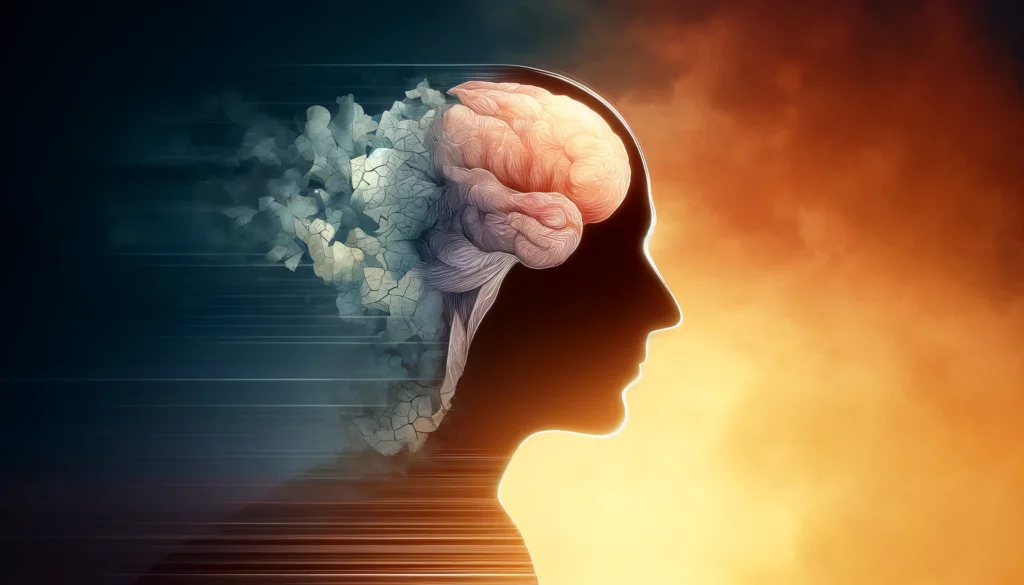Dementia is a complex and multifaceted condition that affects millions of individuals worldwide. It encompasses a range of symptoms associated with a decline in memory or other thinking skills severe enough to reduce a person’s ability to perform everyday activities. Understanding dementia can be daunting, but through the use of informative graphics, we can make this complex topic more accessible and comprehensible. This article delves into how visual aids can illuminate the intricacies of dementia and aid in education, awareness, and empowerment.
You may also like: Tips to Improve Low Average Memory Performance
The Power of Visual Learning
Visual learning is a cornerstone of effective education, particularly in the realm of health and wellness. Graphics, infographics, and art can simplify complex ideas, making them easier to understand and remember. This is especially true for dementia, where understanding the nuances of the condition is crucial for caregivers, health professionals, and those affected by it.
Decoding Dementia Through Infographics
Infographics are powerful tools for distilling complex medical information into digestible visuals. They break down statistics, symptoms, and treatment options in a way that is engaging and easy to follow. For example, a dementia infographic might depict the stages of the disease, highlight key symptoms, or provide statistics on its prevalence. These visuals are designed to cater to diverse learning styles, making information more inclusive and accessible.
Infographics can also bridge the gap between scientific data and public understanding. By using simple language and visuals, they can convey important messages and encourage proactive health measures. This is vital in dementia care, where early detection and intervention can significantly impact the quality of life. Moreover, they can be shared across multiple platforms, reaching a wider audience and fostering community-wide awareness.
Visualizing Complex Data
Visual aids are not just limited to infographics. Charts, diagrams, and illustrations can also play a crucial role in breaking down complex data. These tools can portray the impact of dementia at both micro and macro levels, showing individual symptoms as well as societal trends. Through the use of color coding, timelines, and flowcharts, complex ideas can be segmented into manageable pieces, aiding in better retention and understanding.
Enhancing Memory Retention
The human brain is wired to process visual information more effectively than text. This makes graphics a potent tool in enhancing memory retention. When complex concepts related to dementia are presented visually, they are more likely to be remembered and recalled later. This is particularly beneficial in educational settings, where both caregivers and healthcare professionals need to retain vital information to provide effective care.

Historical Context and Evolution of Dementia Understanding
Understanding the historical context of dementia is essential in appreciating how far we have come in diagnosing and treating the condition. Historically, dementia was often misunderstood and stigmatized. Over the centuries, advances in medical science have transformed it from a mysterious ailment to a well-researched field.
The Early Misunderstandings of Dementia
In ancient times, dementia was often attributed to supernatural causes or viewed as a natural part of aging. This misunderstanding led to stigma and neglect, as individuals with dementia were often marginalized. Historical records reveal a lack of structured care or understanding, reflecting broader societal misconceptions about mental health and cognitive decline.
Milestones in Dementia Research
The journey of dementia research is marked by significant milestones. In the early 20th century, Alois Alzheimer identified the first recorded case of Alzheimer’s disease, a major type of dementia. Since then, research has evolved, leading to a better understanding of the brain and cognitive decline. The discovery of the amyloid plaques and neurofibrillary tangles in Alzheimer’s disease has been pivotal in shaping modern research and treatment approaches.
Progression to Modern Understanding
Modern research continues to explore the genetic, environmental, and lifestyle factors contributing to dementia. Visual graphics play a crucial role in this research by illustrating complex data and making it accessible to a broader audience, thus fostering greater awareness and understanding. By presenting research findings visually, misconceptions can be dispelled, and more informed discussions can take place, paving the way for improved care strategies and interventions.
Current Trends in Dementia Awareness
The current landscape of dementia awareness is marked by a growing emphasis on public education and the utilization of digital tools. Today’s technology allows us to create interactive and dynamic graphics that engage audiences in new and meaningful ways.
The Role of Digital Platforms
Digital platforms have transformed how we share and consume information. Social media, websites, and apps are instrumental in disseminating dementia-related content. Interactive graphics on these platforms can provide real-time updates, engage users, and foster community discussions. They also allow for personalized content, tailoring information to the user’s preferences and making learning more engaging and effective.
Social Media’s Influence
Social media platforms have revolutionized the way dementia awareness campaigns are run. They offer a space for sharing personal stories, creating support networks, and spreading educational content. Hashtags, viral challenges, and live sessions can enhance visibility and engagement, making dementia a more talked-about issue and reducing stigma through increased understanding.
Art and Storytelling in Dementia Awareness
For instance, dementia art projects often aim to highlight the personal experiences of those living with the condition. By using visual storytelling, these projects create emotional connections and foster empathy and understanding among viewers. Art can be a powerful medium for expressing the lived experiences of dementia, allowing for a deeper connection and understanding beyond what traditional methods offer.

Future Implications and the Role of Technology
The future of dementia understanding and care is closely tied to advances in technology. Emerging technologies such as artificial intelligence (AI) and virtual reality (VR) offer promising avenues for enhancing dementia care and education.
AI and Dementia
AI has the potential to revolutionize dementia diagnosis and treatment. Machine learning algorithms can analyze vast amounts of data to identify patterns and predict disease progression. Visual representations of this data can help clinicians make informed decisions and tailor interventions to individual needs. Moreover, AI can assist in personalizing care plans, offering recommendations based on real-time data analysis.
Virtual Reality as a Tool for Understanding
Virtual reality offers immersive experiences that can simulate the effects of dementia. These simulations can help caregivers and healthcare professionals better understand the challenges faced by individuals with dementia. By experiencing the world through the eyes of someone with dementia, they can develop more effective communication and care strategies. Such experiences also promote empathy, leading to improved patient-caregiver relationships.
The Future of Interactive Tools
Emerging technologies also herald the future of interactive educational tools. Augmented reality (AR) applications, for instance, can overlay information onto the real world, enhancing learning experiences. These tools can offer step-by-step guides or simulate scenarios, providing practical training opportunities for caregivers and healthcare professionals, thereby improving their preparedness and response.
Practical Advice for Using Graphics in Dementia Education
For health and wellness coaches, science journalists, and biohackers, leveraging graphics in dementia education can enhance communication and understanding.
Tips for Creating Effective Dementia Graphics
- Simplify Complex Information: Use clear and concise language paired with visuals to break down complex concepts into understandable pieces. Avoid jargon and focus on clarity to ensure that the message is accessible to all.
- Highlight Key Points: Focus on the most critical information and make it stand out using color, size, and design. Prioritize essential data and employ contrasting colors or bold fonts to draw attention to significant details.
- Engage Emotionally: Use storytelling and relatable imagery to create an emotional connection with the audience. Incorporating personal stories or testimonials can add depth and relatability, encouraging viewers to connect on a personal level.
- Incorporate Interactivity: Where possible, use interactive elements to engage users and allow them to explore the content at their own pace. This can include clickable elements, animations, or quizzes that encourage active participation and reinforce learning.
- Test and Iterate: Regularly update and test graphics with your target audience to ensure they meet their needs and expectations. Feedback loops can help refine content, making it more effective and impactful over time.
By following these guidelines, you can create graphics that educate, inform, and empower those seeking to understand dementia.

Conclusion
Understanding dementia is a crucial step in addressing the challenges it presents. Through the use of informative graphics, we can demystify this complex condition, making it more accessible to the public. Visual aids not only enhance comprehension but also foster empathy and awareness, ultimately leading to better care and support for those affected by dementia.
As we continue to explore the possibilities offered by technology and visual communication, the future of dementia education looks promising. By embracing these tools, we can pave the way for a more informed and compassionate society. Through collaborative efforts and innovative approaches, we can ensure that dementia education evolves to meet the needs of future generations, fostering a world where understanding and empathy prevail.
Further Reading:
Is it dementia or normal aging?
Important Note: The information contained in this article is for general informational purposes only, and should not be construed as health or medical advice, nor is it intended to diagnose, prevent, treat, or cure any disease or health condition. Before embarking on any diet, fitness regimen, or program of nutritional supplementation, it is advisable to consult your healthcare professional in order to determine its safety and probable efficacy in terms of your individual state of health.
Regarding Nutritional Supplements Or Other Non-Prescription Health Products: If any nutritional supplements or other non-prescription health products are mentioned in the foregoing article, any claims or statements made about them have not been evaluated by the U.S. Food and Drug Administration, and such nutritional supplements or other health products are not intended to diagnose, treat, cure, or prevent any disease.


